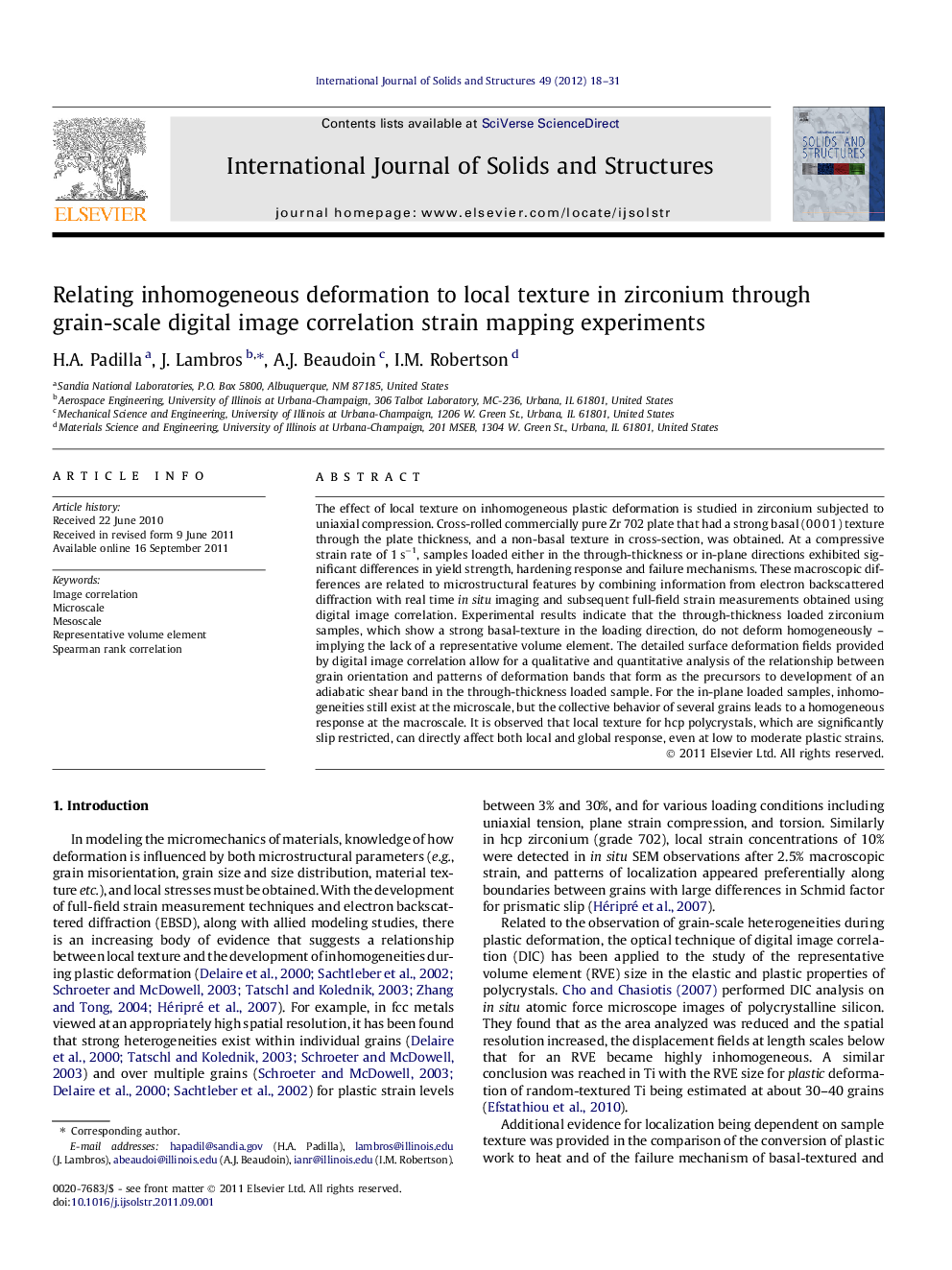| Article ID | Journal | Published Year | Pages | File Type |
|---|---|---|---|---|
| 278250 | International Journal of Solids and Structures | 2012 | 14 Pages |
The effect of local texture on inhomogeneous plastic deformation is studied in zirconium subjected to uniaxial compression. Cross-rolled commercially pure Zr 702 plate that had a strong basal (0 0 0 1) texture through the plate thickness, and a non-basal texture in cross-section, was obtained. At a compressive strain rate of 1 s−1, samples loaded either in the through-thickness or in-plane directions exhibited significant differences in yield strength, hardening response and failure mechanisms. These macroscopic differences are related to microstructural features by combining information from electron backscattered diffraction with real time in situ imaging and subsequent full-field strain measurements obtained using digital image correlation. Experimental results indicate that the through-thickness loaded zirconium samples, which show a strong basal-texture in the loading direction, do not deform homogeneously – implying the lack of a representative volume element. The detailed surface deformation fields provided by digital image correlation allow for a qualitative and quantitative analysis of the relationship between grain orientation and patterns of deformation bands that form as the precursors to development of an adiabatic shear band in the through-thickness loaded sample. For the in-plane loaded samples, inhomogeneities still exist at the microscale, but the collective behavior of several grains leads to a homogeneous response at the macroscale. It is observed that local texture for hcp polycrystals, which are significantly slip restricted, can directly affect both local and global response, even at low to moderate plastic strains.
► We use digital image correlation to image strain at the microstructure in textured Zr. ► More of the strain inhomogeneity is revealed at higher magnifications. ► Loading along basally, rather than prismatic, oriented Zr yields more inhomogeneity. ► Schmid factors of each slip system are statistically correlated with strain fields.
